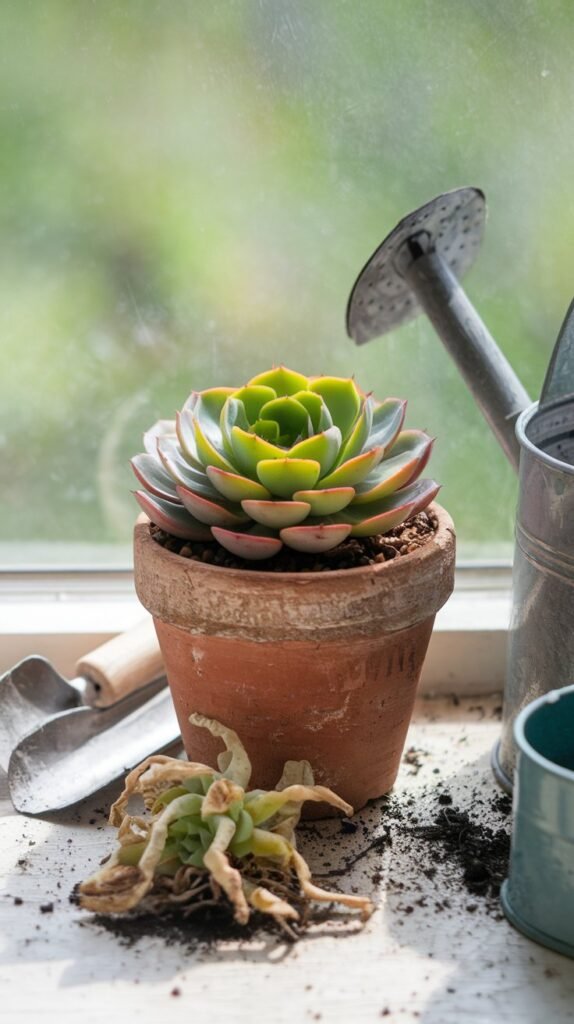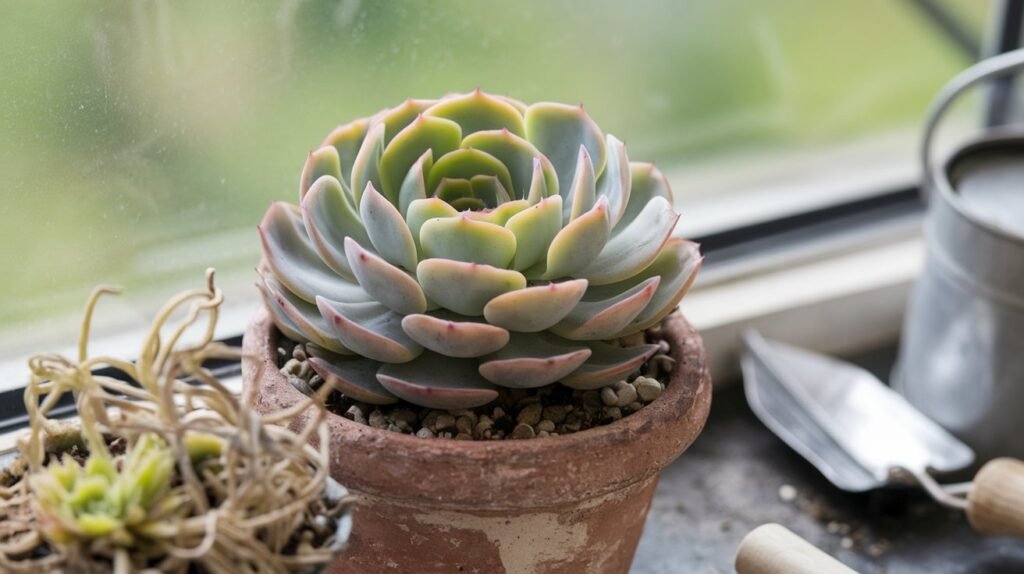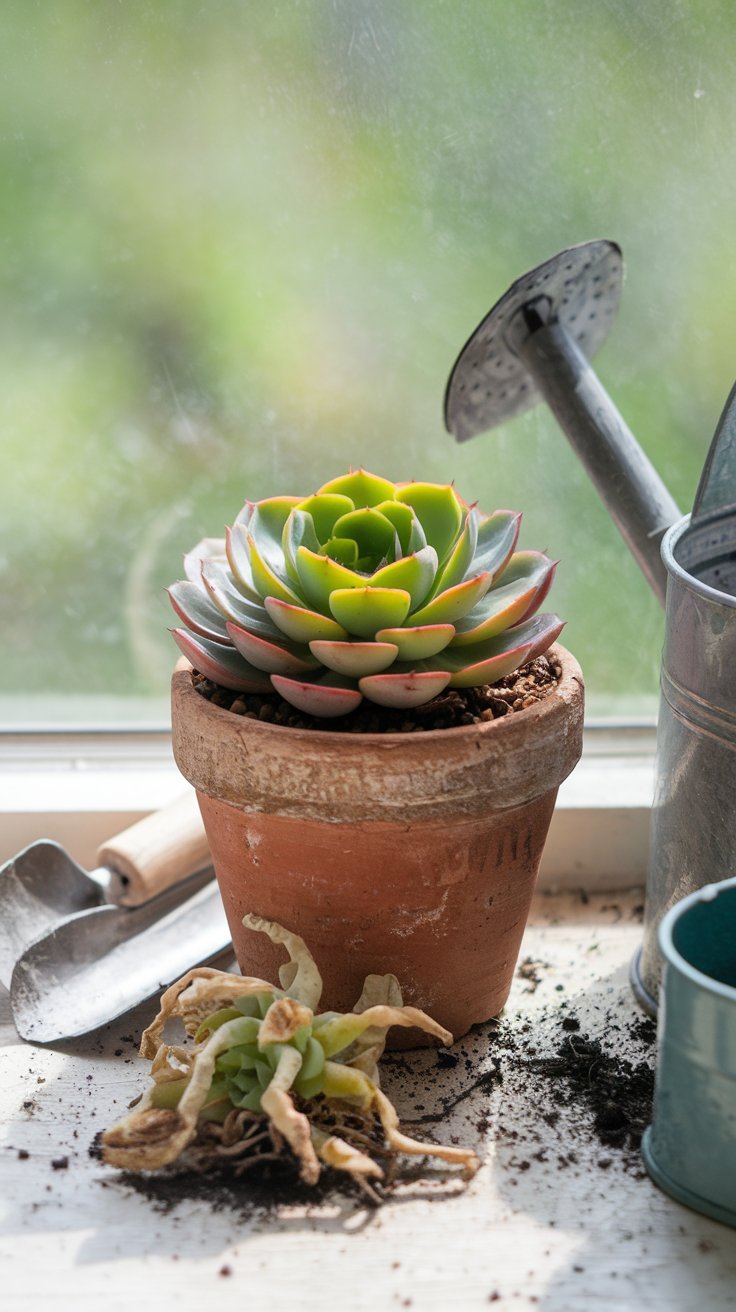Learn how to save your overwatered succulent with my 10-step guide, backed by 10+ years of gardening experience. Discover signs, solutions, and prevention tips!

Hi there! I’m Ashley Scott, a gardening enthusiast with over a decade of experience nurturing plants, including finicky succulents. Over the years, I’ve rescued countless succulents from the brink of drowning—yes, even my beloved Double Delight and Munstead Wood varieties. Today, I’ll share my foolproof method to revive an overwatered succulent, whether it’s indoors or part of your outdoor garden. Let’s dive in!
How to Tell If Your Succulent Is Overwatered

Before jumping into solutions, let’s identify the problem. Overwatered succulents often show:
- Mushy, translucent leaves (they’ll feel like overcooked spinach).
- Yellowing or blackened leaves, starting from the base.
- Soft, rotting stems or roots (a musty smell is a dead giveaway).
- Moldy soil or a persistently damp potting mix.
Pro Tip: Compare this to underwatered succulents, which have dry, crispy leaves and firm stems. Confused? Check out my guide on overwatered vs. underwatered succulents for a side-by-side comparison.
10 Steps to Save Your Overwatered Succulent
1. Stop Watering Immediately
The moment you notice symptoms, put that watering can down! Overwatering suffocates roots, so your plant needs a drought period to recover.
2. Remove the Plant from Its Pot
Gently lift your succulent out of its container. If the roots are stuck, tap the pot’s sides or use a spoon to loosen the soil. Be gentle—damaged roots are fragile.
3. Inspect and Trim the Roots
Healthy roots are firm and white. Rotted roots? They’re brown, mushy, and smell unpleasant. Use sterilized scissors to trim all affected parts. For severe cases, rinse roots in a 1:5 hydrogen peroxide-water mix to kill fungus.
4. Let the Plant Dry Out
Place your succulent on a paper towel in a shaded, airy spot for 1–3 days. This drying phase prevents further rot and mimics their natural desert habitat.
5. Choose the Right Pot and Soil
Opt for a terra cotta pot with drainage holes (I swear by these for my Fragrant Cloud roses too!). Use a gritty, well-draining mix—combine potting soil with perlite or coarse sand.
6. Repot with Care
Position the succulent so its base sits slightly above the soil line. Gently fill gaps with fresh soil, avoiding compaction. Skip watering for 5–7 days to let roots heal.
7. Water Sparingly
When it’s time to water, soak the soil thoroughly, then let it dry completely. Use the “finger test”: if the top 1–2 inches are dry, it’s safe to water.
8. Adjust Light and Humidity
Place your succulent in bright, indirect light (east-facing windows are ideal). Avoid direct sun until it recovers. Reduce humidity—no misting!
9. Monitor for Recovery
New growth? You’re on track! If leaves remain limp, check for hidden rot. For succulents without roots, propagate healthy leaves (more on that below).
10. Prevent Future Overwatering
- Use a moisture meter for accuracy.
- Water only when the soil is bone-dry.
- Rotate pots to ensure even drying.
How to Propagate a Dying Succulent
If your succulent is beyond saving, don’t despair! Propagate healthy leaves or stem cuttings:
- Snip a healthy leaf close to the stem.
- Let it callous over for 2–3 days.
- Place on dry soil and mist lightly every few days.
- Roots will sprout in 2–4 weeks.
I’ve successfully revived Gertrude Jekyll hybrids this way—patience is key!
FAQs: Your Overwatered Succulent Questions, Answered
Can you save a succulent without roots?
Yes! Propagate healthy leaves or stem sections. I saved my Honey Perfume succulent this way.
How long does recovery take?
Typically 2–6 weeks. Monitor for new growth and adjust care as needed6.
Is overwatering worse than underwatering?
Absolutely. Overwatering causes irreversible root rot, while underwatered plants often bounce back with a good soak.
Final Thoughts
Reviving an overwatered succulent isn’t just about saving a plant—it’s about learning its language. My Chrysler Imperial rose once taught me the hard way! For more tips, explore my guides on indoor succulent care or soil mixes for drought-loving plants.
Need visual help? Check out these expert tips from Gardening FAQs or the Spruce’s root rot guide.
Remember: When in doubt, underwater. Your succulents will thank you! 🌵
Ashley Scott is the founder of USA Garden Hub, where she shares practical gardening advice. Follow her on social media for daily plant rescue stories!

